How and how long should you soak chickpeas before preparing different dishes?
Content:
The fashion for proper nutrition has led to the fact that Turkish peas have entered the kitchens of Russians. For those who monitor their health and control their weight, it will be useful to learn how to soak and cook a valuable protein product.
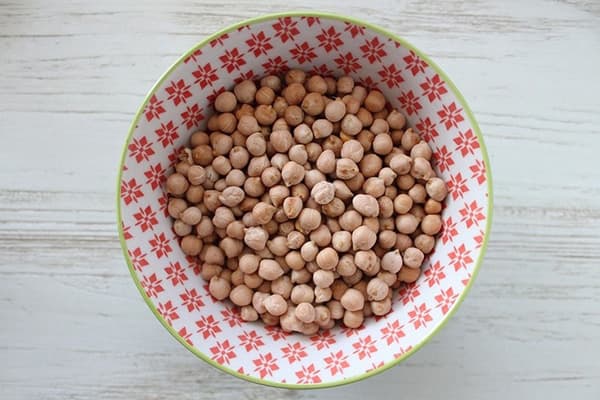
Is it necessary to soak chickpeas before cooking?
Before cooking, chickpeas must be soaked. Even in recipes for oriental dishes, the list of ingredients sometimes directly states “soaked.”
During the soaking process, the beans absorb moisture and swell. Therefore, they require less time to boil. Not 1.5–2 hours, but 30–40 minutes. And the shorter the duration of heat treatment, the more vitamins and microelements are retained in the finished dish.
Unsoaked legumes, after boiling, turn out to be tough on the inside and soft on the outside. They look unsightly in salads and pilaf and are not suitable for making purees.
If chickpeas have been in storage for a long time and have dried out, then when cooked without pre-soaking, they will turn out tough and tasteless.
General rules for soaking
Most housewives know how to soak cereals overnight: buckwheat, rice, pearl barley.But in the case of chickpeas, different rules apply. It is not advisable to leave it in water for longer than 5 hours. And there are two reasons for this:
- with prolonged soaking, the structure of vegetable protein changes, so the seeds turn out hard;
- Fermentation processes may begin and the product will become unfit for consumption.
The ideal soaking time is 3-4 hours. The seeds must first be cleaned of debris and washed under running water. You can leave the chickpeas overnight, for 7–8 hours, but then you won’t be able to boil them quickly.
If the apartment is hot, put the beans in the refrigerator.
What kind of water should you soak chickpeas in: cold or hot? Both extremes are harmful, as they lead to changes in the protein structure and product hardness. The water should be at room temperature. It is advisable to use settled, boiled or filtered water.
Chickpeas are poured with water in a ratio of 1:4. When soaked, the seeds almost double in volume. If there is not enough liquid, the beans will remain dry in the center and the cooking time will increase.
If you have hard water in your home or your chickpea seeds are too old, soak the chickpeas in baking soda. It softens the product and speeds up the cooking process. Just add no more than 0.5 teaspoon, otherwise the finished dish will have a specific taste.
How to properly soak chickpeas for pilaf, soup and hummus
The rules described above work if a person is going to eat chickpeas as a main dish or use them as a side dish. What should those who are planning to cook pilaf, soup or hummus do?
How to soak chickpeas for pilaf?
Do I need to pre-soak chickpeas for pilaf? Yes, but the seeds should be a little tough. After all, they are added to the zirvak at the very beginning, and then stewed for 45-60 minutes.If you use soft chickpeas, they will turn into mush during cooking.
There are two options for soaking chickpeas for pilaf.
- Standard – for 1–2 hours in water at room temperature.
- For a long time - from 12 hours to a day in cold water. The seeds will be larger than with short-term soaking, but will also have a dense structure. To prevent chickpeas from fermenting, place the container in a cool place (for example, a refrigerator) and change the water every 3-4 hours.
There should be 5–6 times more liquid than seeds. For 1 kg of meat, 700–800 g of rice and 150–200 g of chickpeas are required. You can salt the dish during the cooking process.
How to soak chickpeas for soup?
The time for soaking chickpeas for soup depends on the consistency of the finished dish. If you are going to make a thin soup, soak the seeds for 3-4 hours. Then boil for 40 minutes. Add the prepared chickpeas to the dish 10 minutes before the end of cooking.
To prepare the puree soup, soak the seeds for 4-5 hours in water at room temperature. Then cook for another hour.
How to soak chickpeas for hummus?
Hummus is a popular snack in the Middle East. The main ingredients are chickpea puree, sesame paste, vegetable oil and spices. Hummus is rich in plant proteins and Omega-3 fatty acids, so it is often used in vegetarian diets.
Typically, to prepare this dish, chickpeas are soaked overnight in water at room temperature. But 3–4 hours will be enough. Next, the chickpeas are cooked for 1–1.5 hours over high heat.
Press the boiled peas with your fingers. If it mashes easily into puree, it means it is suitable for making hummus.
How and how much to cook soaked chickpeas
There are differences in cooking chickpeas in a regular saucepan and a slow cooker.The general step is to drain the old water and rinse the seeds.
In a saucepan
Pour clean water into the pan and add the soaked chickpeas. The liquid should cover the seeds by at least 3–4 cm. Bring the water to a boil, remove the foam and turn the heat to medium. Cover the pan with a lid. Boil the chickpeas for 30–40 minutes.
Salting chickpeas is allowed no earlier than 10 minutes before the end of cooking. Otherwise, the seed shell will remain strong.
In a slow cooker
Transfer the soaked and washed peas into the device and fill with water so that it covers them by 2-3 cm. Salt, you can add spices (for example, turmeric, red pepper, suneli hops). Set the multicooker to “Stew” mode. Cooking time – 50–60 minutes.
Can you eat raw beans?
Many fans of a healthy lifestyle are interested in whether it is possible to eat soaked chickpeas without heat treatment. Theoretically, yes, only the seeds will be a bit harsh.
Vegetarians and raw foodists eat sprouted chickpeas. After germination, the calorie content of Turkish pea seeds decreases from 309 to 160 kcal, and the amount of nutrients increases. In particular, sprouted chickpeas contain more antioxidants - elements that slow down the aging process and protect the body from cancer.
The benefit of raw seeds is that they reduce the level of “bad” cholesterol and blood sugar, have a positive effect on the functioning of the heart and digestive system, and normalize metabolism.
How to properly soak chickpea seeds so that they germinate and do not spoil?
- Rinse thoroughly.
- Pour the beans with filtered water at room temperature in a ratio of 1:3. Cover the container with a lid, leaving a small hole for air.
- Wait 3 hours.
- Drain out the old water.Rinse the seeds and fill them with fresh liquid again, but in a 1:2 ratio.
- Cover the container with damp gauze. Place in a cool place (maybe in the refrigerator) for 10–12 hours or overnight.
- Drain the water again and rinse the seeds.
The most healthy chickpeas are considered to be the ones whose sprouts are no longer than 1.5 cm in length. The seeds can be eaten as a separate dish or added to fresh vegetable salads.
In terms of the amount of proteins, amino acids and B vitamins, chickpeas are not inferior to meat. It, like fish, contains omega-3 and omega-6 fatty acids. And in terms of fiber content, macro- and microelements, the product will compete with vegetables and fruits. To preserve nutrients and great taste, soak chickpeas properly before cooking. Boil only prepared seeds.
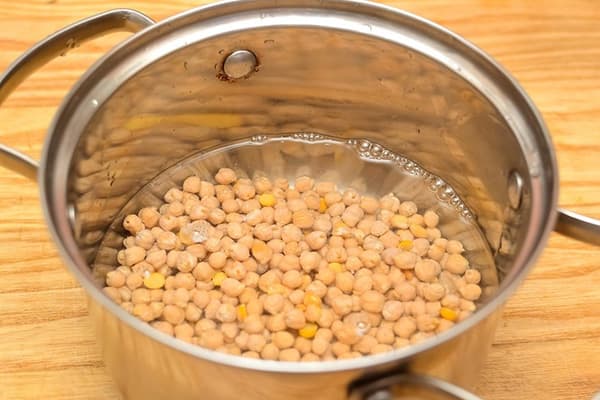
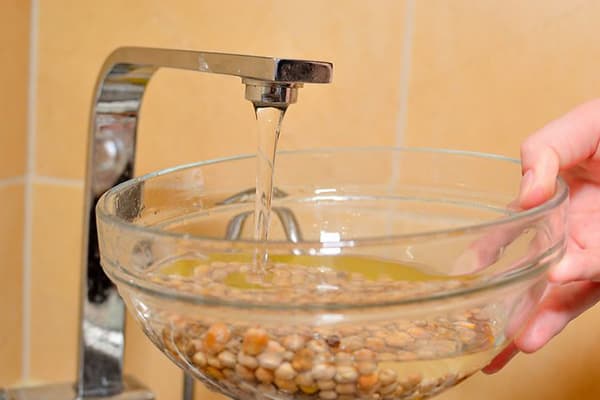
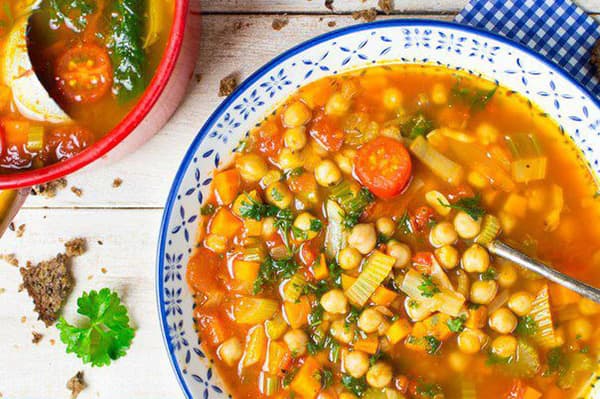
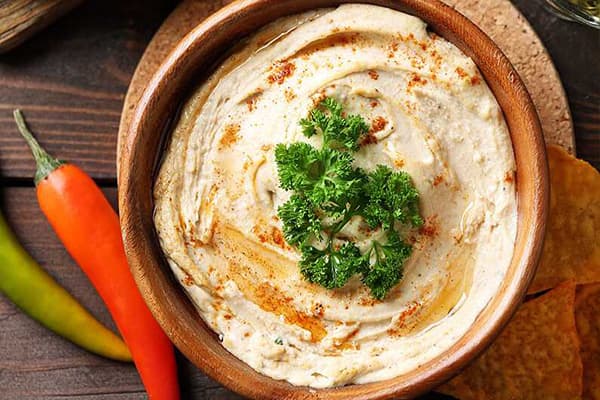
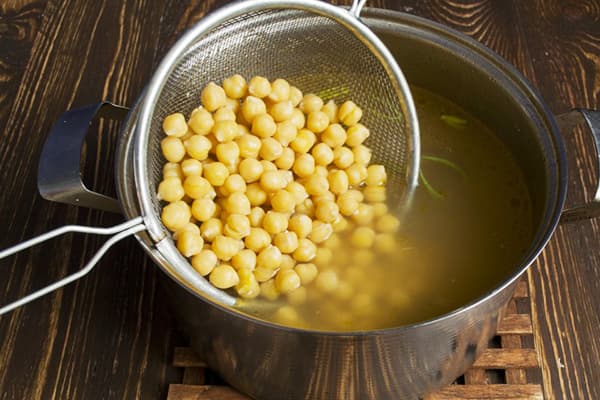
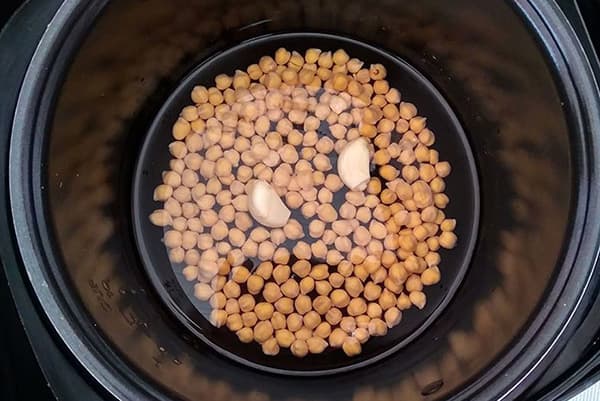
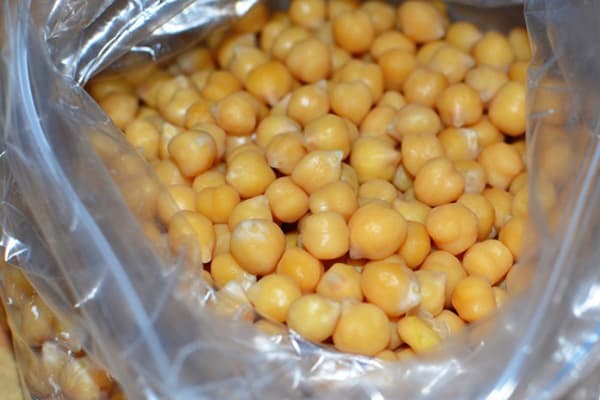
I discovered this product not long ago. Now I’m learning how to cook it properly. Thanks to the author